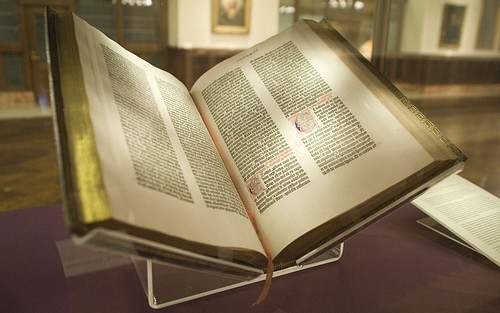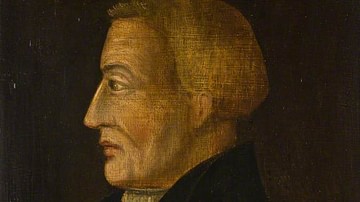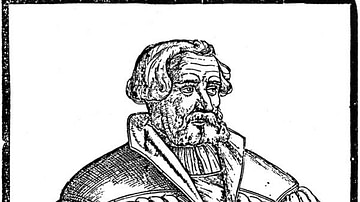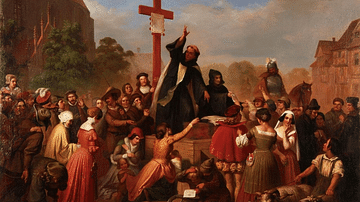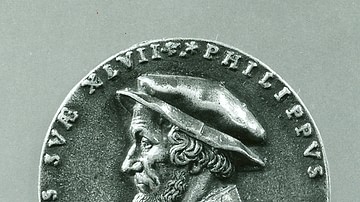The printing press, credited to the German inventor and printer Johannes Gutenberg (l. c. 1398-1468) in the 1450s, became the single most important factor in the success of the Protestant Reformation by providing the means for widespread dissemination of the “new teachings” and encouraging independent thought on subjects previously rigidly controlled by a literate elite.
The so-called Proto-Reformers such as John Wycliffe (l. 1330-1384) and Jan Hus (l. c. 1369-1415) had made many of the points Martin Luther would later but lacked the means for reaching a large audience. Gutenberg's invention of the moveable face type and the press meant that books could now be printed in larger numbers, sold cheaply, and distributed widely. Martin Luther (l. 1483-1546) recognized the value of the press and exploited it brilliantly in his challenge to the authority of the Catholic Church.
Martin Luther's 95 Theses, which previously would have circulated only among the literate scholars of Wittenberg, became a bestselling pamphlet within a year of its initial posting in 1517. Between that date and c. 1525, Luther would publish over half a million works, establishing him as the first bestselling author of the Early Modern Period, outpublishing the popular humanist writer Desiderius Erasmus (l. c. 1469-1536), Catholic apologists, and contemporary reformers. Works by John Calvin (l. 1509-1564), Heinrich Bullinger (l. 1504-1575), and others also became bestsellers, establishing the Protestant vision of Christianity, largely, through the power of the printing press.
Proto-Reformers & Print
There already existed a literate lay population prior to Gutenberg's invention but it was small, and since books were expensive, it was comprised of the upper class who could afford them. Most Europeans were illiterate, were born and died in the same village without ever traveling far beyond if at all, and received information about the world primarily through the local priest or, sometimes, traveling merchants. People knew what they had been taught by parents and priests, and this knowledge was passed down from generation to generation without question because there was no counterpoint to present a challenge.
Entertainment took the form of storytellers or actors who had memorized tales they had learned through oral transmission; written works were primarily only consulted in monasteries and their scriptoriums or private libraries. Illuminated manuscripts could take up to a year to produce and would have been meaningless to most people who could not even read the language they spoke, much less Latin, even if they had been able to afford such a work. Some books were mass produced at this time on a modest scale through woodblock printing but, as they were written in Latin, made little impression on the majority of the populace.
When John Wycliffe translated the Bible from Latin to Middle English his hope was that it would enable more people to read the work for themselves, but most could not read English any more than Latin. Wycliffe's Bible, as well as his works in Latin, did attract considerable attention and would influence the work of Jan Hus and help start the Bohemian Reformation (c. 1380 to c. 1436), but woodblock printing was time-consuming and costly, and so, even though Wycliffe's Bible went through multiple printings (over 200 still exist) it could not reach an audience of the scope Luther would later. Wycliffe was condemned by the Church posthumously, and Hus was executed in 1415, with neither having gained the hoped-for widespread support for their reforms.
Gutenberg's Press
Gutenberg's press changed all of that by providing the means for mass production on a larger scale and distribution of reading material. Gutenberg's father worked in the mint in Mainz, and it is thought that he taught his son the craft, which involved using a punch to engrave letters on coins. The use of the punch, along with presses used for wine and oil, are thought to have inspired Gutenberg to create the printing press.
Moveable type printing had been invented in Korea c. 1234 (or, according to some scholars, in China c. 1040) and was used in the Chinese Song Dynasty (960-1279), but this does not seem to have been the source for Gutenberg's invention. He seems to have developed the idea independently from both the mint and the wine press, and at some point around 1450, he moved from Mainz to Strasbourg where he partnered with some investors and began construction of his first printing press.
He understood that the Church provided the best hope for large profit and so, once he had a workable process, he printed indulgences – formerly written by hand and sold to parishioners to shorten their stay (or that of a loved one) in purgatory – and, in 1456, after he had moved back to Mainz, a standard Bible. He was deeply in debt and so borrowed from the businessman Johann Fust, whose adopted son, Peter Schoffer, was one of the first people Gutenberg had taught the process of printing. Fust called in Gutenberg's debt before he was able to pay and confiscated his print shop, quickly taking credit for the invention and, with Schoffer, printing Gutenberg's Bible under his own name.
The process was picked up by Arnold Pannartz (d. 1476) and Conrad Sweynheym (also given as Schweinheim, d. 1477), who established one of the most famous presses in Venice in 1469, while Schoffer continued to print in Mainz, and other presses began to appear elsewhere. Gutenberg died in poverty in 1468, but by that time, his invention was already transforming European society by providing reading matter at an affordable cost. Books that were formerly only available to the wealthy elite, like Pliny the Elder's Natural History, were sold to anyone who wanted and could afford one by 1472.
Printing Press & Luther
The Church welcomed the printing press at first as it enabled the distribution of a standard Bible to parishes throughout Europe at low cost as well as providing mass-produced writs such as indulgences, decrees, and notices. The Church still controlled what was printed because there was no challenge to its authority and, further, because most people were still illiterate. Just because books were now available at low cost, it did not mean that people were suddenly able to read them or even had the desire to. Books or pamphlets were usually read by someone to an audience in the town square or pub and 'reading' was understood, more or less, as 'performance'. Scholar John Bossy comments:
Until the 17th century, silent reading was either an accomplishment of scholars or a self-conscious devotional mode. Reading meant muttering to oneself or reading aloud to others; the written word was a 'hearable sign'. This was what it meant to the scripture-reading underground and also what it meant to Luther. His word was a word to be heard, a promise to be received in faith, not a text to be pored over. Faith, as St. Paul had said, came by hearing; the ear, not the eye, was the Christian sense. (100)
'Hearing' could be monitored by the Church, and what one heard could be controlled until Luther posted his 95 Theses in 1517 which, by 1519, had been published and widely distributed. Although Luther claimed he had no intention of publishing the piece, it seems he encouraged both publication and distribution. Ironically, the 95 Theses attacked the Church's practice of selling indulgences, one of the first writs Gutenberg had printed, and it became popular reading quite quickly. With so many copies of Luther's work in circulation, the Church could no longer control what was being 'heard', and Luther's challenge to ecclesiastical authority was embraced and spread faster and further than could ever have been imagined by Wycliffe or Hus. Scholar Mark U. Edwards Jr. comments:
The printing press allowed Evangelical publicists to do what had been previously impossible: quickly and effectively reach a large audience with a message intended to change Christianity. For several crucial years, these Evangelical publicists issued thousands of pamphlets discrediting the old faith and advocating the new…Not only did the Reformation see the first large-scale "media campaign", it also saw a campaign that was overwhelmingly dominated by one person, Martin Luther. More works by Luther were printed and reprinted than by any other publicist. (1)
Luther was excommunicated in January 1521 and called to appear at the Diet of Worms to recant in April of the same year. Luther instead defended his 'new teachings' in his now-famous "Here I Stand" declaration. Luther's speech at the Diet of Worms was transcribed by supporters, published, and distributed, winning him even greater support. When he translated the New Testament from Latin into German later that year, it became a bestseller as did every other work he sent to the print shop. The printing press made Luther the first celebrity author of the Early Modern Period.
Printing Press & Other Reformers
While the press allowed Luther to criticize the Church openly, it also provided his opponents the means to criticize him. These early attacks came not from the Church but from men who had initially supported Luther, including Andreas Karlstadt (l. 1486-1541) and Thomas Müntzer (l. c. 1489-1525). His teachings were also challenged by the works of the Swiss Reformer Huldrych Zwingli (l. 1484-1531). Zwingli disagreed with Luther on the nature of the Eucharist, and so his works, including Zwingli's 67 Articles of faith, represented a significant challenge to Luther's authority. Zwingli, in turn, was challenged by the Anabaptists, who had been inspired by him but, after breaking with his vision, were able to publish pieces advancing their own.
At the same time, Luther's right-hand man, Philip Melanchthon (l. 1497-1560), defended Luther's views through his own publications, which encouraged others to publish their views supporting him and Luther and still others to have their attacks on both published. Religious works, usually published as quartos (a single sheet folded in four to create eight pages), were the bestsellers of the day, and Protestant works – because they were so contentious in challenging authority – sold better than any others.
These works were also popular because of their novelty. The press gave a voice to a demographic who otherwise would have had none: women. Argula von Grumbach (l. 1490 to c. 1564), Katharina Zell (l. 1497-1562), Marie Dentière (l.c. 1495-1561), and Olympia Fulvia Morata (l. 1526-1555), among others, all published pieces supporting the Protestant Reformation. These works were often controversial simply because they had been written by women but also for their advocacy of reform and criticism of the Church. At the same time, the Catholic Church made little use of the press in the first decades of the Reformation, seeming to rely on its old authority for the most part and publishing little by way of defense. Edwards notes:
A simple comparison between the vernacular editions of the Catholic publicists and the output of one Evangelical, Martin Luther, suggests the wildly unequal battle for the hearts and minds of literate laity in the first decades of the Reformation. Over the period 1518 to 1544, Luther's publications (that is, printings and reprintings of his works in German, excluding Bible translations) numbered at least 2551. For the same period, the Catholic publicists produced 514 printings. In stark terms, this translates into about five printings of Luther for every Catholic printing…And of course Luther was seconded by a number of other prolific Evangelical authors. (29)
Among these were John Calvin and Heinrich Bullinger. Calvin first published his iconic work The Institutes of the Christian Religion in 1536, revising and reprinting it periodically for the rest of his life in addition to the publication of his sermons, lectures, and biblical commentaries. Bullinger wrote his famous Decades between 1549-1551, and the work was then translated into English and published in 1577, 1584, and 1587. Translations of Calvin and Bullinger were among the bestsellers in England, influencing the Puritan and Separatist movements there. Bullinger's moderate approach echoed somewhat the earlier advocacy of Martin Bucer (l. 1491-1551), who, like Karlstadt and Müntzer, had been an early supporter of Luther before breaking with him and publishing his own views emphasizing the importance of Christian unity.
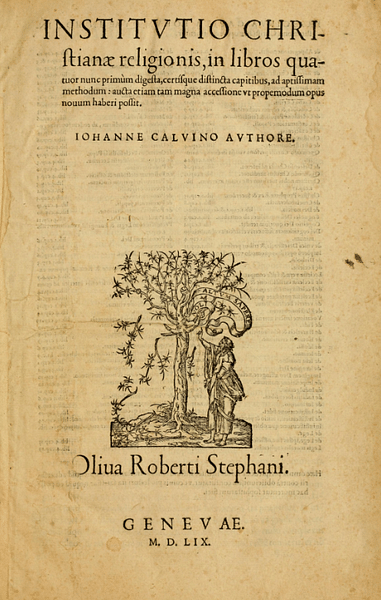
The Press & Counter-Reformation
This is not to say the Church was silent in print during the early years of the Protestant Reformation. Cardinal Thomas Cajetan (l. c. 1468-1534) and theologian Johann Eck (l. 1486-1543) were only two of the most visible opponents of Luther's teachings. Jeanne de Jussie's Short Chronicle (1535), and similar works, also provided a counterpoint to the Reformation's claims. It was not until the Counter-Reformation, however, that the Church began to seriously address the issue of printed works.
The Counter-Reformation (also known as the Catholic Reformation, 1545 to c. 1700) was the Church's response to the Protestant Reformation and addressed the proliferation of what the Church considered heretical reading matter. Having failed to silence Martin Luther or those who came after him, the Church focused on reforming its image and reestablishing its authority by clearly defining what it meant to be a Catholic and why the Protestant claims had no merit.
Although the Church seems to have been slow in making the most of the printing press, it had published significant refutations of Protestant claims as well as works advancing the Catholic vision of Christianity. Two of these mass-produced books were directly responsible for the activism of one of the greatest Catholic advocates, Ignatius of Loyola (l. 1491-1556), a Basque soldier who became a Catholic priest following a religious experience. This experience was inspired by two books he read on the life of Christ and the acts of the saints in 1521 while recovering from an injury. Loyola would go on to write his Spiritual Exercises (1548) and found the Jesuit Order to defend the claims of the Church. Loyola's Spiritual Exercises is still considered one of the greatest guides on religious devotion in the present day and formed the basis for the discipline of the Jesuits.
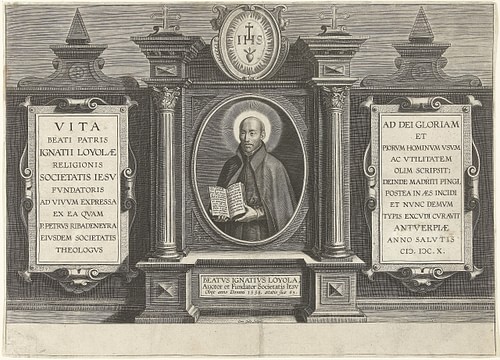
Individual Catholic monarchs and popes responded to the proliferation of Protestant works by banning them and fining, jailing, or executing printers. The Jesuits, while supporting this policy, also fought back through the establishment of Catholic schools, seminaries, and universities, which produced writers who then published their own apologetics supporting the Church and denouncing the claims of the Reformation. The Council of Trent (1545-1563) reformed errors and abuses within the Church while reaffirming its authority, and one aspect of this was the establishment of the Index of Prohibited Books in 1563. The Index was a list of works considered heretical or threatening to one's faith, and Catholics were not allowed to read or publish them; doing so risked excommunication and punishment by secular authorities.
Conclusion
The Church had established versions of the Index prior to 1563, persecuting printers and destroying their presses, but this only made Protestant works more popular because they were forbidden. To get around the Index, before and after it was formally adopted at Trent, printers disguised works by giving them other titles, omitted the name of the author from the cover, and regularly had them smuggled from one district or country to another.
As early as 1524, the printers of Leipzig complained to the city council that they were losing considerable income due to the ban in that city on printing Protestant works. Leipzig had been one of the most profitable publishing centers prior to Luther, but, like Wittenberg, it experienced a boom afterwards when books on the 'new teachings' became their most profitable commodity. Printers who could not afford to sit out the ban moved to other cities where they could continue their work or printed the books secretly and at high risk. Whichever route they chose, Protestant works continued to be printed and remained the most popular of their catalogs. Scholar Andrew Pettegree comments:
The impact on the German print market was profound: it amounted almost to a relaunch. In the ten years before Luther, the Holy Roman Empire had been responsible for about a quarter of European book production; 75 percent of these books were in Latin. In the next ten years, German book production advanced dramatically to 42 percent of the European total; in the five years 1521-1525 Germany accounted for one in every two books published in Europe and 80 percent of these were in German…the role of evangelical print in this transformation was unmistakable. During the ten years between 1518-1527 Luther’s own works accounted for 20 percent of total German production, but he was not a gang of one. (Rublack, 382)
The more effort the Church put into suppressing Protestant works, the more popular they became, and finally, the Protestant vision was established primarily due to its writers' powerful use of the written word. Books allowed people who had never and would never meet Luther or Melanchthon or Calvin or Bullinger to hear their views directly, whether by reading the books themselves or hearing them read, and book by book, the 'new teachings' of the Protestant Reformation asserted themselves as a legitimate belief system on par with the old faith that had once so easily silenced them.

